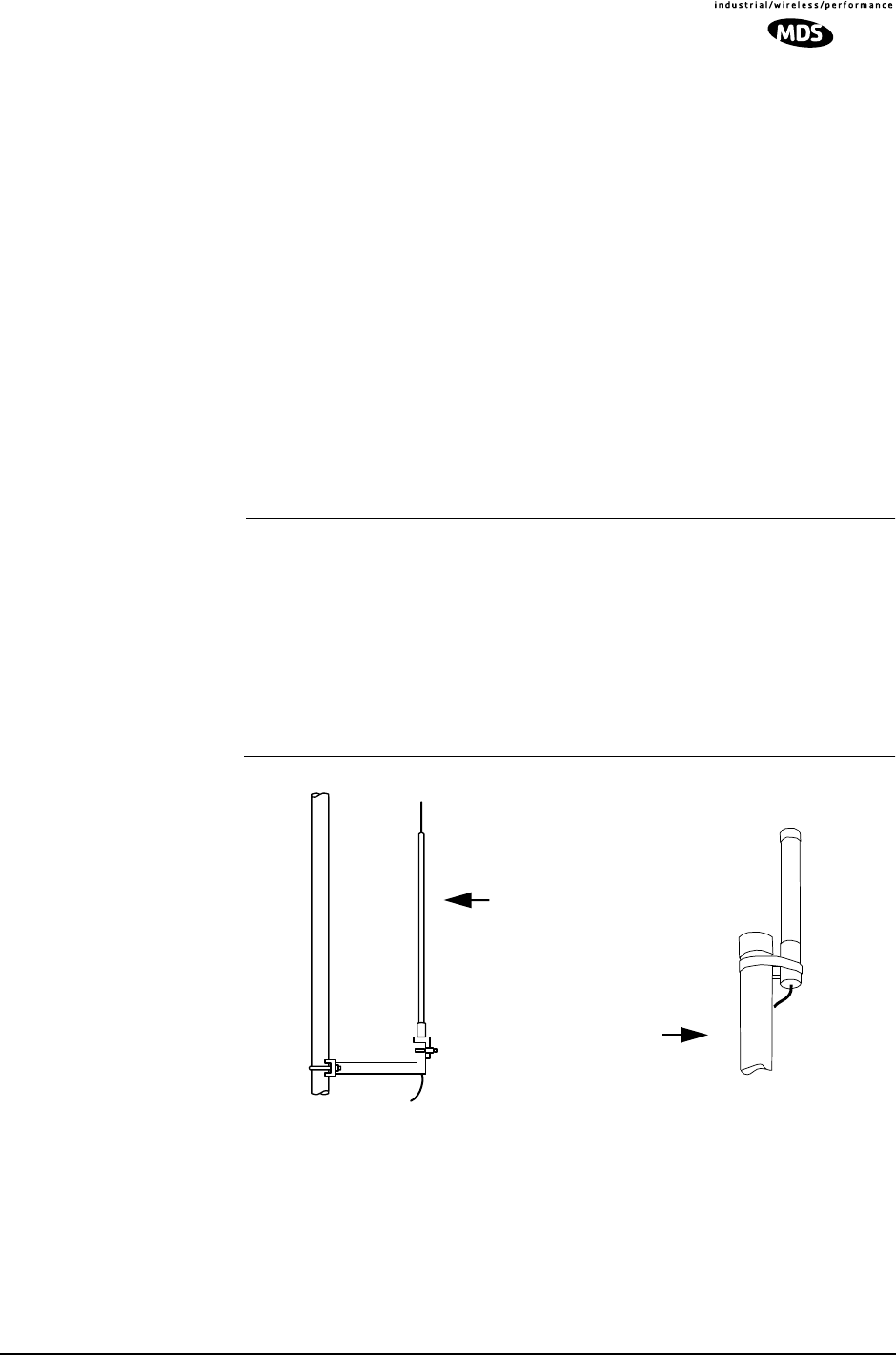Specifications

MDS 05-4055A01, Rev. A MDS entraNET 900 System Guide 107
– 90 dBm provide a “fade margin” of 15 dB to account for variations in
signal strength that may occur from time-to-time. RSSI can be measured
with a terminal connected to the
COM1 Port of the transceiver.
(See “Antenna Direction Optimization” on Page 122 for details.)
6.1.4 Antenna & Feedline Selection
Antennas
The equipment can be used with a number of antennas. The exact style
used depends on the physical size and layout of a system. Contact your
MDS representative for specific recommendations on antenna types and
hardware sources.
In general, an omnidirectional antenna (Figure 6-4) is used at the Access
Point station site. This provides equal coverage to all of the Remote
sites.
NOTE: Antenna polarization is important. If the wrong polarization is
used, a signal reduction of 20 dB or more will result. Most
systems using a gain-type omnidirectional antenna at the
Access Point station employ vertical polarization of the signal;
therefore, the Remote antenna(s) must also be vertically polar-
ized (elements oriented perpendicular to the horizon).
When required, horizontally polarized omnidirectional
antennas are also available. Contact your MDS representative
for details.
Invisible place holder
Figure 6-4. Typical Omnidirectional Antennas
At Remote sites and units in point-to-point LANs, a directional Yagi
(Figure 6-5) antenna is generally recommended to minimize interfer-
ence to and from other users. Antennas are available from a number of
manufacturers.
High-gain Type
Unity-gain Type










